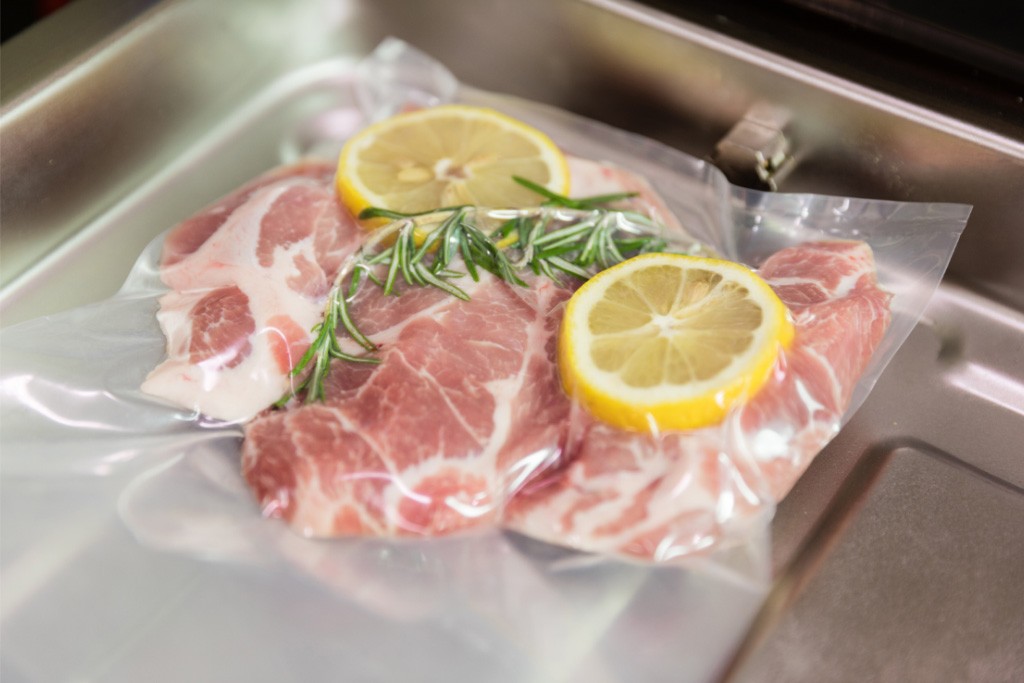5 Benefits of Sous Vide for Restaurants

Sous vide is a cooking method where food is vacuum-sealed and slow-cooked in a water bath at a precise, controlled temperature, resulting in evenly cooked dishes with retained flavours and tenderness.
Clifton Food Range is the gold standard for commercial sous vide baths in the UK. They pair our sous vide thermometers with their equipment to enable chefs to be HACCP compliant as they introduce water baths to their kitchens.
We spoke to them to find out why choosing sous vide for business will save money, reduce stress and increase food quality and consistency. Carry on reading to learn more.
1. Increases food quality
Sous vide ensures even and consistent cooking, plus it locks in flavour. Because the food is cooked at your desired temperature and maintained there, it will be perfectly cooked from edge to edge.
Containing the food in a vacuum-sealed bag also means you don’t lose any flavour and nutrients during the cooking process. “Everything you put there will stay there”, Charlotte Cross, Marketing Director at Clifton Food Range, explained. “When you’re simmering asparagus, for example, the water goes green, and you throw that away. But if you’ve got everything in that bag, you’re retaining the flavour and the texture and the colour. And you’re not losing any of the nutrients associated with other cooking methods.”
2. Makes operations smoother
For businesses, introducing a water bath into the kitchen usually requires an initial development period where chefs will use thermometers to find out how long it takes for their food to reach the correct core temperature for that particular item. But once that procedure is established and documented, the water bath produces consistent results each time. It means prep can be carried out early to reduce the rush during peak times and make operations smoother. “It takes a lot of pressure out of kitchens”, Charlotte says. “Some chefs say it’s like an extra pair of hands.”
3. Delivers consistent results
Unlike traditional cooking methods, sous vide creates a controlled environment which ensures consistently precise results. Charlotte says: “As long as they’ve done their development work in the beginning with weight and size and temperature and timing, the chef will know that every time they cook, they’ll get the same consistent results time and time again, which of course is what your restaurant customers want.”

4. Reduces food waste
Traditional cooking methods often cause moisture loss in food, which makes them shrink. This is minimal with sous vide, because everything that goes into the bag stays in the bag. Not only does this reduce waste, but it makes the results juicier, too.
This is particularly effective for meats where moisture loss is usually high, like steak. “When you cook a 225g steak on a hob, it will shrink and might become 180g steak, but you aren’t going to get that shrinkage with a water bath”, Charlotte explains.
5. Cuts costs
The other benefit of reducing waste is that it helps businesses reduce costs. Charlotte explains how chefs can use the knowledge that their steak will no longer shrink to alter their purchase decisions: “Chefs could think, okay, let’s save a bit of money here and initially buy that 180g steak and get the same results as if I were to spend money on a 225g steak.”
On top of this, smoother business operations can help to potentially cut back on staff costs. And with water baths using less energy than traditional cooking methods, there are energy cost savings involved, too.
Summary
There are endless benefits to adding sous vide baths to restaurant kitchens. With improved quality and consistency, smoother business operations, reduced waste, and multiple opportunities to reduce costs, it seems there isn’t any reason not to consider it. And by choosing reliable sous vide thermometers to certify your processes, you can be confident you’re staying HACCP compliant at the same time.
You might also like:
HACCP Dishwasher Temperatures & How to Monitor Them
3 Benefits of Using Bluetooth Thermometers for Business
EHO Visits — Temperature Tips from a Food Safety Advisor